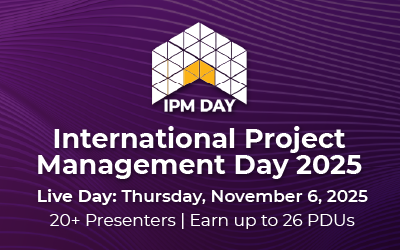By Dr. Luigi Morsa
December 1, 2022
One of the greatest sources of “headache” for a project leader, a project manager or, in an Agile environment, a Squad Leader, is to discover that some mistakes have been made. Connected to the error finding there could be a bad reaction, because often, the impulsive behaviour is to look for the guilty, resulting in a loss of patience. This usually happens for the leaders that are not well trained, or when they are not inclined to model appropriate roles of responsibility, where to lead by example is an essential condition. Regardless of the good or bad reactions of a leader, the fact is that mistakes are part of the work and cannot be avoided. We need to accept that humans are not perfect and can never be made to be perfect. Whilst preventive measures may help to reduce human error, you can never prevent it entirely [1]. We are purposely excluding the case where employees make mistakes because they are unable or not educated enough to perform a task; on the other hand, we are assuming that all the employees should have all the required knowledge and ability to perform the assigned job; if this is not valid, other actions have to be taken, like further training or assigned easier tasks.
Surfing the internet or reading informational essays will help you find a lot of good advice that, if adopted, will most certainly help to reduce the possibility of making mistakes. Among the ones it is worthy to list the following ones:
- Increase quality control; encourage communication[1].
- Use checklists to reduce the chance of mistakes; ensure that all employees are aware of their roles and responsibilities; establish regular audits; make sure that everyone has access to information; create a culture where people feel comfortable reporting any issues or concerns[2].
- Consider automation for repetitive tasks.
- Standardize Processes (create a unified document, choose a centralized platform to store your processes, settle on a consistent format, clarify universal language for the whole company, set requirements for every process)[3].
Unfortunately, the reality in big projects is much more complex. The diligence, the dedication, and the attention in performing a task paid by each single employee, or even by the teams, separately, could not be enough. In order to achieve a successful result, everything has to be in the right “harmony”. In this regard, an important role is played by the people responsible for the overall organization. What happened in 1999 to a spacecraft of NASA gives us the chance to introduce a concept extremely important in avoiding mistakes: “the check and balance” system.
The Mars Climate Orbiter was a 638-kilogram artificial satellite launched by NASA on December 11th, 1998. It was used to conduct investigations of Mars’ atmosphere, climate, and to take daily pictures of the planet’s surface. Scientists hoped that such information would aid in reconstructing Mars’ climatic history and provide evidence of buried water reserves. At 09:00:46 UT Sept. 23, 1999, the orbiter began its Mars orbit insertion as planned. The spacecraft was scheduled to re-establish contact after passing behind Mars, but, unfortunately, no signals were received from the spacecraft[4].
An investigation indicated that the Mars orbiter lost ($125 million) because a Lockheed Martin engineering team, who helped build, develop, and operate the spacecraft for NASA, used English units of measurement (for example pound-seconds), while the agency’s team used the more conventional metric system (Newton-seconds)[5].
The error caused the orbiter to miss its intended orbit and to fall into the Martian atmosphere at approximately fifty-seven kilometres in altitude; thus disintegrating due to atmospheric stresses[4].
This trivial mistake is extremely meaningful because it is a case where both teams made it work without errors, but the combination between them produced a dramatic loss.
“The problem here was not the error, it was the failure of NASA’s systems engineering, and the checks and balances in our processes to detect the error. That is why we lost the spacecraft”, said Dr. Edward Weiler, NASA’s Associate Administrator for Space Science
The checks and balances system has deep philosophical and historical roots (refer to Greek historian Polybius, c. 200 – c. 118 BC) and has been tested numerous times throughout the centuries since the US-Constitution was ratified[7]. It is a concept that comes from political science, and in the U.S. government (and in several other west democracies) refers to the separation of power, which is ensured through the establishment of three different branches: the executive branch, the judicial branch, and the legislative branch. The Constitution gives specific abilities to each one of these three branches to ensure that no one section of the government could obtain excessive unchecked power[8].
We know that in almost all fields, there are already control/governance bodies that have the task to monitor and check the work made by other organizations. For instance, in the aircraft industry, the Federal Aviation Administration regulates the U.S. civil aviation and, to some degree, checks the work made by some aircrafts producers like Boeing. Most of the time this idea is kept at higher level, namely among organizations and unfortunately, there is not enough time and resources (by control organization) to check all the work. For this reason, it is extremely important that the managers interpret the “checks and balances” like an attitude that they have to apply as much as possible. In agreement with the technicians or subject experts, they must ensure that the overall process is arranged so that a mistake made by a single entity is promptly detected by others. We can also say that the manager must study the process and identify the most suitable “checks and balances” concept. Furthermore, in case of failures, they have to analyze through lessons learned and modify the “checks and balances” structure to make it more robust.
Usually, it is always complicated to give a generalization or to define guidelines, but an idea can be proposed here. For instance, in small teams a good practice could be that the most experienced team members could check the work of the less experienced members. In addition, the work of some teams should be controlled by other teams. For huge companies, where some work is given to suppliers, the work should be checked internally to the organization from start to finish, while utilizing a step-by-step process for the most critical areas. This is also valid for the control bodies, as they should investigate deeply and bring up the most suspicious conclusions. Furthermore, they should not rely on the final results, but what is presented to them. The balances have to be ensured by the fact that no entity is completely free (in actions), but subject to a check, and therefore not completely independent.
Finally, only by applying the “checks and balances” concept within the teams and among the teams that cross-check each other, the possibility to propagate mistakes will be kept at minimum. To conclude, as the appropriate right attitude to be held by managers, it is highly recommended, as Dr.Weiler wisely suggests, to never point the finger at a single entity of the chain in case of mistakes, but to always think about what can be improved in the overall check and balances system — thus making it “safe” for people to search for and find all such mistakes.
References
- Penelope Herbert, “HOW TO REDUCE WORKPLACE HUMAN ERROR QUICKLY”, Insanely Clever Marketing Website, November 26, 2018.
- Quality Gurus Inc. “10 Strategies for Reducing Human Error in Your Workplace”, qualitygurus.com, 2022.
- Ben Mulholland, “Standardizing Processes: How to Create a Documentation Style Guide”, process.st, August 21, 2017.
- Asif A. Siddiqi, “Beyond Earth: A Chronicle of Deep Space Exploration, 1958-2016”, Office of Communications – NASA History Division, Sept. 28, 2018.
- Robin Lloyd, “Metric mishap caused loss of NASA orbiter”, CNN.com, September 30, 1999.
- Nasa, “Mars Climate Orbiter Team Finds Likely Cause of Loss”, nasa.gov, Sept. 30, 1999.
- COM EDITOR, “Checks and Balances”, Dec. 4, 2020.
- Brian Beers, “Checks and Balances: Definition, Examples, and How They Work”, com, Sept. 21, 2022.
About the Author
Luigi Morsa (Ph.D.) is an Aerospace Engineer and Project Manager working in the Aircraft Industry. Luigi’s passion for project management has led him to contribute to two books by Dr. Harold Kerzner, the pioneer and globally recognized expert in project management. Luigi wrote two case studies about the Aircraft industry for Project Management Case Studies, 5th and 6th Editions (Wiley, 2017, 2022), two sections (Open Innovation in Action; The Project Manager’s Role in Developing Innovation Skills and Ideas in People) and the chapter “Innovation Management Software” for Innovation Project Management 1st and 2nd editions (Wiley, 2019, 2023).
He recently wrote with Richard Maltzman, PMP and Master Lecturer at Boston University Metropolitan College, the chapter “10 Lessons Learnt from Irresponsibility in Project Management” for the book De Gruyter Handbook of Responsible Project Management (De Gruyter, 2022).
Luigi is a contributor for the IIL blog; he is the author of Team Management: The Key to Success (2022); Agile. Creativity. Innovation. (2022); Reduce the Risk – Share the Success (2022), “Managing Conflicts in Projects” (2021); “Chess and Business Strategy” (2020); “People Innovation: A New Vision to Innovate” (2019).
Disclaimer: The ideas, views, and opinions expressed in this article are those of the author and do not necessarily reflect the views of International Institute for Learning or any entities they represent.



